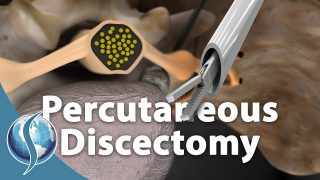Waddell’s Signs
This is a very difficult topic. It, however is an appropriate discussion, considering we are in a national debate about healthcare and its costs.
As a physician, sometimes we are asked to make judgements on the validity of a patients complaints, and compare them to the physical findings. It can be an uncomfortable position for some physicians. As the patient advocate, the physician will give the patient the benefit of the doubt. But, if there are inconsistencies, and yet a physician makes risky recommendations, despite the inconsistencies, the Physician may potentially be recommending a treatment or test that may cause more harm than good.
There are well known disease entities such as Munchausen Syndrome, where a patient will subject themselves to aggressive and invasive treatments, including surgery because of a non-physical or psychologic need. A careful physical exam may identify findings that are not consistent with the reported conditions. These so called Nonorganic Physical signs are important clues to identifying patients that may have underlying non-physical needs.
In 1979, the Volvo Award in Clinical Science went to Dr. Gordon Waddell, for his research documented in the following article:
Nonorganic Physical Signs in Low Back Pain, by Waddell et al.
To summarize, Dr. Waddell identified 5 characteristics of patients exhibiting Nonorganic Physical signs of Low Back Pain.
1. Tenderness. Does not follow common patterns. To give an example, significant pain with even light touching of the skin. Or wide spread pain to large deep areas.
2. Distraction. Examples include no pain with distracted provocative moves such as distracted straight leg raise. Another example is observed normal range of motion or activity, but with testing, significant limitation of muscle strength or range of motion.
3. Simulation. Pain patterns that do not fit a physical reason. Examples are significant pain with light compression on the skull, or pain with light twisting of the pelvis with patients without hip problems.
4. Regional inconsistencies. Examples of non-anatomic or inconsistent strength or sensation findings during an entire examination.
5. Over reaction. Examples are severe pains with any movement, excessive gesturing to express pain. The air leak sign.
These 5 signs are now known as the Waddell’s Signs.
As a Physician, I do not purposely look for these signs. But, as a spine specialist, these signs are often easy to identify. If I have suspicions of a non-physical cause of complaints, I am more cautious to order invasive testing or treatment. I am definitely less likely to offer surgical management unless I am convinced the findings and tests identify a life or limb threatening problem. The workup and counseling can be very lengthy, costly and at times, seem adversarial.
For some patients, they are just anxious, and over react. But, if they exhibit many of the signs above, I would counsel them on the oddity of their complaints, and unfortunately, it means more non invasive testing to make sure we are not missing an underlying more serious condition. It can get costly for some entity to pay for all these tests.
It is not that the physician does not trust the patient. It is that the physician does not want to do more harm by recommending a more invasive, potentially harmful, and unneccesary treatments. Unfortunately, for all parties involved, Patient, Physician, Family, Work Place, Payor, etc., the outcomes and relationships are often diminished during the evaluation for these Nonorganic physical findings. As a physician, we have a responsibility to consider this possibility in some of our patients. This scenario does not make the physician very popular. It is a scenario that challenges physician professionalism. But, it is consistent with our charge to do no harm.
Is it better to over treat than to under treat? That question begets a subset of questions such as, do the unintended consequences of the treatments cause more harm? What is the less risky choice? What are the costs associated with over treatment? Who will then bear the costs of the treatment? Do the patient and family understand the ramification of the choice? Are the treatments based on consistent physical findings, or solely on complaints? Physicians are asked to balance those questions, as we counsel patients on the next step in their treatments. Sometimes, the choice is not obvious in the face of seemingly serious complaints. But a Physician’s training, and experience often reflect an approach that at least considers the non-organic signs when making recommendations.
Last modified: January 5, 2018










